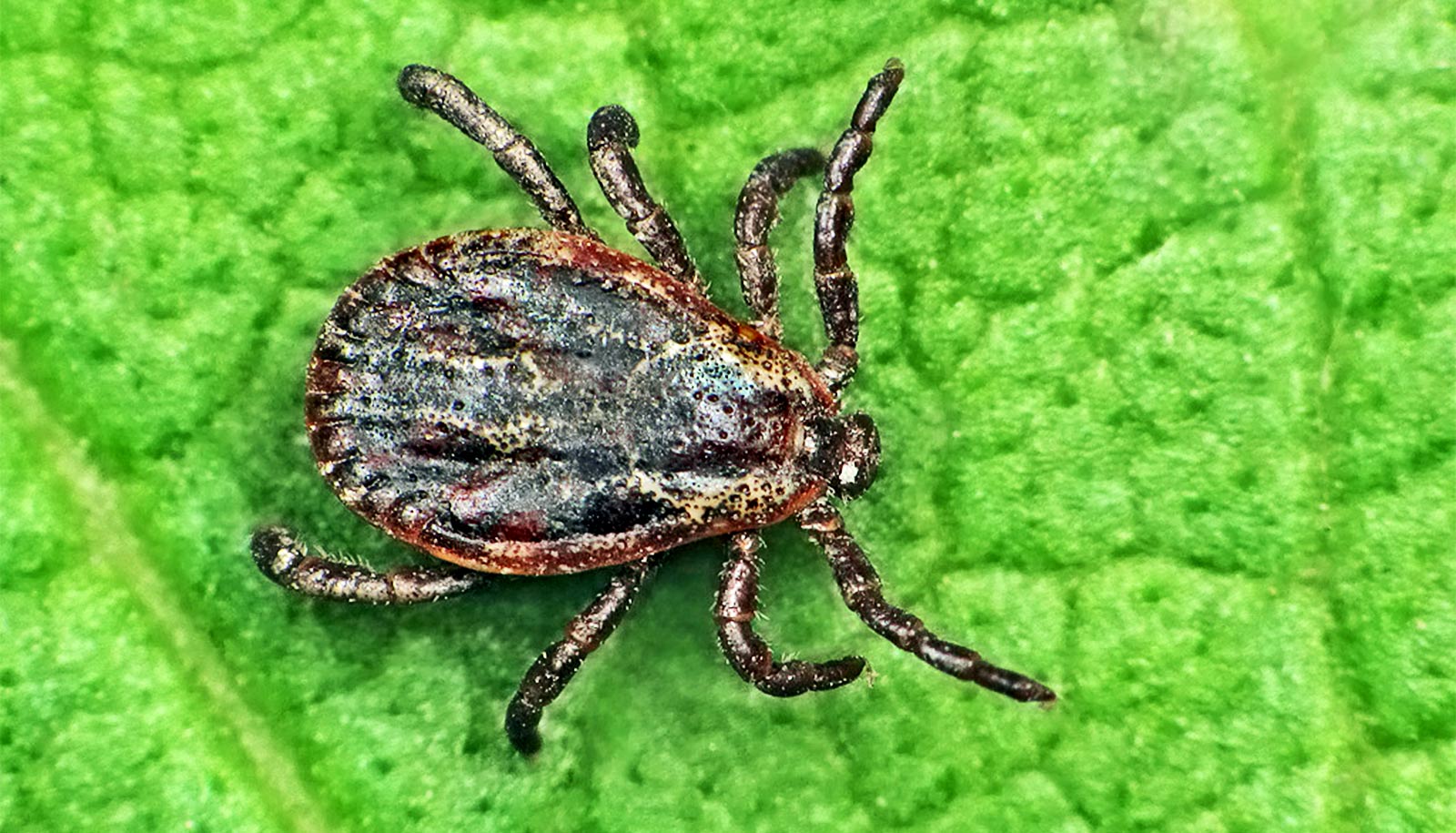Researchers have created a DNA test that identifies Lyme disease in horses.
The test could have applications for humans and dogs, too.
As described in the Journal of Veterinary Diagnostic Investigation, Steven Schutzer, a professor of medicine at Rutgers New Jersey Medical School, devised a special DNA test that helped a Cornell University School of Veterinary Medicine team identify neurologic Lyme disease in a sick 11-year-old Swedish Warmblood mare.
Although veterinarians suspected Lyme disease, a standard PCR test didn’t detect the disease agent, the corkscrew-shaped bacterium Borrelia burgdorferi.
As with the treatment of most diseases, early detection is essential with Lyme.
“Early diagnosis leads to immediate treatment,” Schutzer says. “And, naturally, that gives the best chance for a cure.”
The “genomic hybrid capture assay,” a highly sensitive test being developed by the Schutzer team, identified the pathogen in a sample of the horse’s spinal fluid, allowing it to be diagnosed and successfully treated. The test works by first selectively isolating DNA from the microorganism causing the disease.
“The method is like having a special, specific ‘fishhook’ that only grabs Borrelia DNA and not the DNA of other microbes, nor the DNA of the host (animal or human),” Schutzer says. “Detecting DNA of the disease is a direct test, meaning we know you have active disease if it’s circulating in the blood or spinal fluid.”
Lyme disease is the most common vector-borne illness in the US, according to the Centers for Disease Control and Prevention (CDC). In humans, a characteristic skin rash may or may not occur, along with fever, headache, and fatigue. Unchecked, the infection can move to the nervous system, the joints, and the heart.
Similar to humans, horses are incidental, dead-end hosts for B. burgdorferi, meaning the hosts carry the infection but do not infect others.
Not all infected horses develop clinical signs of Lyme disease. If symptoms occur, they can include chronic weight loss, lameness, and low-grade fever. Antibody tests usually are administered when a Lyme disease infection is suspected.
In the case described in the study, an antibody test and a PCR test of the mare didn’t indicate an infection. Only Schutzer’s advanced test detected the disease.
Lyme disease in horses can cause long-term complications that include damage to the nervous system, joints, skin, and even vision.
“The diagnosis of Lyme neuroborreliosis (neurologic Lyme disease) in horses is rarely confirmed antemortem and has frustrated veterinarians for years,” says Thomas Divers, the veterinarian who led the study’s equine team and a professor of medicine and co-chief of the Section of Large Animal Medicine at Cornell University’s College of Veterinary Medicine.
“This is a very promising technique. Focused treatment against B. burgdorferi administered in this case resulted in the horse’s complete athletic recovery.”
While many illnesses, such as COVID-19 and strep throat, attack humans with many numbers of pathogens, in other diseases, such as Lyme disease, the bacteria slowly reproduce within a host, producing far fewer numbers and making detection more difficult.
Schutzer, an expert in Lyme and other tick-borne diseases, has been working to devise ways to better detect diseases that possess what he terms “low copy numbers” of a pathogen.
According to the CDC, about 476,000 cases of Lyme disease are reported in humans each year. The black-legged tick, also known as the deer tick, is responsible for most cases of Lyme disease in the US and seems to be increasing in abundance and geographic spread.
Additional coauthors are from the Institute of Genome Sciences at the University of Maryland School of Medicine; Miller and Associates Equine Practice in Brewster, New York; Mid-Atlantic Equine Hospital in Ringoes, New Jersey; and B. W. Furlong and Associates in Oldwick, New Jersey.
Source: Rutgers University



